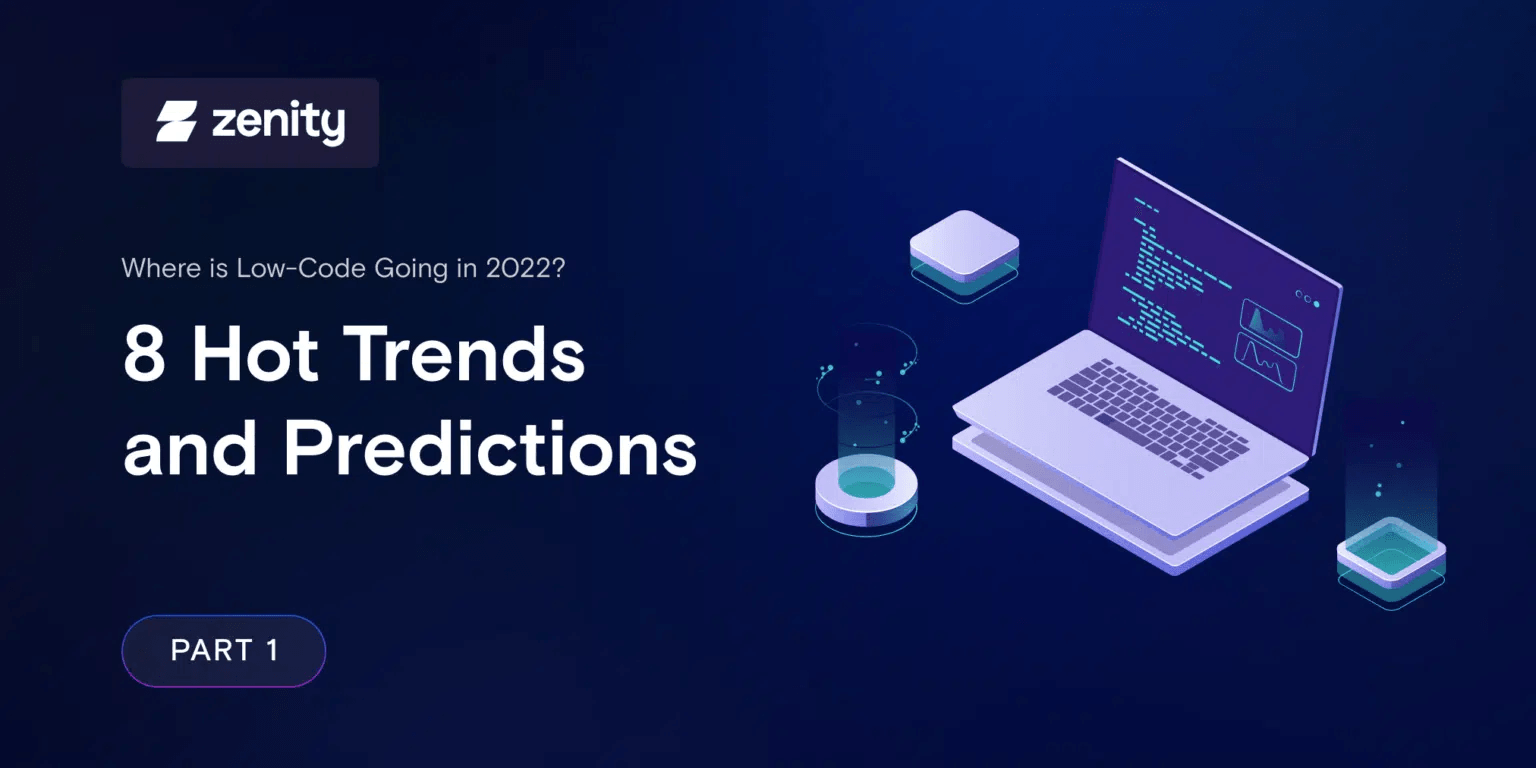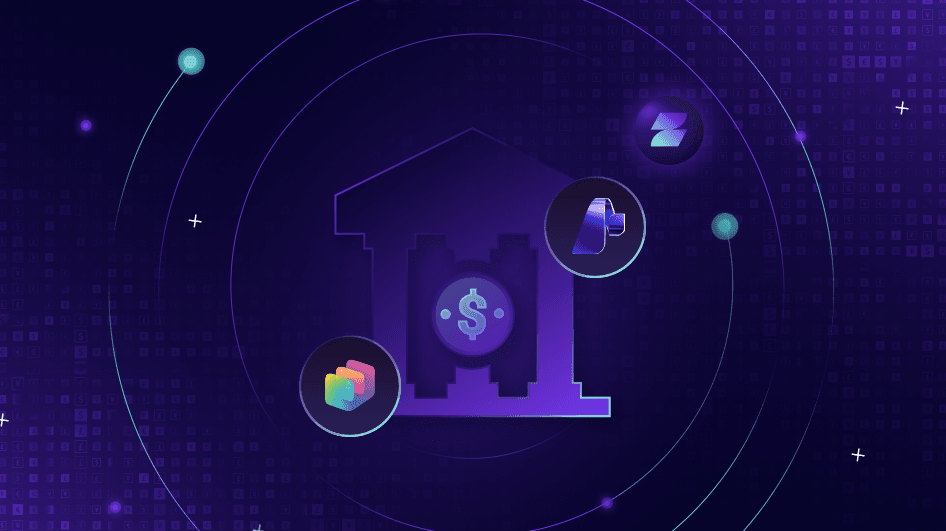Where is Low-Code Going in 2022? 8 Hot Trends and Predictions (Part 1)

What’s the trick to staying competitive in 2022? The ability to quickly adjust your business models and processes.
You need only rewind to 2020 to see why.
A worldwide pandemic. The need to create new business models, innovate new business processes, establish new means of interacting with customers… with little warning and small budgets. And all this just to stay afloat.
For many of the businesses that succeeded, low-code development solutions were part of their success. Democratizing development, enabling business-critical changes to happen faster, lowering development costs… low-code solutions were the right tool at the right time.
There’s no turning back. Covid may have been a disruptive force that accelerated a slow trend toward digital transformation, but the new nature of business and work will last well beyond Covid.
In this new world, low-code/no-code development continues to be a valuable strategy to be used in parallel to traditional development for organizations that need to keep up with the increasing speed of the digital world and the ever-changing needs of the marketplace.
According to Accenture, 73% of C-level executives now see low-code/no-code (LCNC) driving new customer-facing applications. 50% see it creating new business rules and process controls.
As 2022 approaches, here’s how low-code trends will affect businesses across the globe.
Trend #1: Citizen development on the rise
According to a ReportLinker study, the global low-code development platform market size is expected to reach $46.4 billion by 2026. As early as 2017, Gartner reported that the market demand for mobile app development services would grow at least five times faster than an internal IT organization’s capacity to deliver them.
Out of necessity, more and more business and operations professionals are taking ownership of development processes in large organizations, making business-led development a new norm. In fact, Gartner research reveals that even now 41% of employees outside of IT are customizing and building applications.
To meet the demand, popular platforms like Mendix, KissFlow, Bubble, Betty Blocks and Microsoft’s PowerApps have emerged and are going strong. While each has its unique features, their goals are identical—to provide citizen developers with the necessary tools to increase their speed of development, testing, and deployment.
And increase speed it does. During the height of COVID in 2020, to relieve pressure on its IT department, Starbucks used LCNC tools to complete development tasks sooner and more efficiently.
Citizen development in 2022:
Will continue to rise in incidence. Citizen devs and pro devs will find more and more efficient ways of working together and harnessing the unique skills and contributions of each to the development process.
Trend #2: IT professionals using low-code to accelerate development
It’s not only citizen devs who are adopting low-code/no-code avenues of development. Professional coders are discovering that low-code development tools can make them more productive.
During the pandemic, for example, a $60 billion retailer launched a low-code-built mobile app in 11 days (after a consulting firm had told them it would take a year to build using a standard development process).
Low-code platforms enable pro coders to accomplish more, but that’s not their only benefit. It’s almost always the application foundation, the more basic level of coding, that gets streamlined by low-code development. That enables pro developers to spend less time on the basics and more time on the creative, demanding and fulfilling advanced levels of coding.
Making work more interesting? Who doesn’t want that? Down with drudge; long live low-code!
IT professional use of low-code in 2022:
Will increase as more professional developers appreciate low-code platforms as professional tools that can be leveraged to build faster, accomplish more, and free up their time to focus on the most enjoyable, challenging and skilled parts of development.
Trend #3: Established SaaS platforms transforming into low-code platforms
Once upon a time, when you bought Salesforce, you got what Salesforce had to give you. Period. If your company used Slack and wanted to streamline workflows, you could use the predefined apps in Slack’s App Directory. But if what you wanted wasn’t there, you were out of luck.
Of course, if you had coding experience, you might be able to rig up some solution. Or you could call up your IT department or a Salesforce vendor and add your request to their wishlist – but who knows when that request would materialize? And if you were using an external vendor, that customization would just add to your expenses.
Today, Salesforce, Slack, Teams and plenty of other long-established SaaS platforms are adding low-code capabilities to empower business users and give them independence in creating the apps they need to optimize their performance.
In 2018, SalesForce launched more robust low-code tools for its Lightning platform and AppExchange. A 2020 IDC study found that organizations using the Salesforce Lightning platform gained an ROI of 545 percent over five years. With increased productivity due to low-code applications, revenue benefits totaled $8.82 million per organization surveyed, with a 63 percent faster lifecycle for app development.
Slack’s Workflow Builder was introduced to enable users to create custom applications and automations within Slack, without the need for coding. Even if “the exact tool or workflow you need may still exist only in your mind,” you as a business user can make it a flesh-and-blood reality (or maybe bits-and-bytes reality?), without waiting for limited-availability IT resources.
SaaS platforms in 2022:
Will continue to develop their low-code tools, enabling both pro and citizen developers to easily create apps, workflows, and automations customized to their precise needs. Widely-used SaaS platforms that haven’t yet jumped on the low-code bandwagon will need to introduce low-code development or customization options in order to stay competitive.
Trend #4 – Top low-code app use cases: business transactions, streamlining Covid management, remote work
Business transactional systems
The Harvard Business Review this year identified “small business transactional systems” as one of the most common uses of low-code/no-code development. Custom applications for managing order quotes, reservations, human resources and field service used to be prohibitive for small businesses, so when low-code/no-code platforms put this level of application creation and customization within reach, small businesses jumped on it.
Covid management
In 2021, as it became apparent that Covid was not going to disappear in the short-term, the world had to move beyond its initial emergency management of Covid to coordination of “normal life under Covid.” Management of a situation in flux requires the the ability to respond rapidly, flexibly and in a coordinated manner across organizations. Low-code/no-code applications were – and continue to be – the perfect tool.
When Oracle built their COVID-19 Therapeutic App, speed of deployment would mean saved lives. They used their APEX low-code development platform, and completed the project at a speed that beat anything they could have done with traditional development.
Healthcare, government and other public services – notorious for bureaucracy and slow-moving projects – leveraged low-code platforms to create critically-needed systems in record time. Gregg Aldana, senior director of Creator Workflows Global Solution Consulting at ServiceNow, described how one healthcare industry customer used low-code to develop a vaccination application in 10 days, resulting in the timely vaccination of over 10,000 healthcare employees. “They said before low-code, this is something that would have taken them months to implement.”
Aldana also gave the example of the U.S. State Department’s efforts to get American diplomats in foreign countries home, or transfer them to other countries. Each country had its own entry COVID regulations regarding precautions, testing and quarantine (plus it varied depending on what country you were coming from!). Using a low-code platform, it took the State Department three to four weeks to roll out 10 to 12 mission-critical native mobile low-code apps that kept their diplomats up-to-date. According to the deputy CIO at the U.S. State Department, this scenario would have taken them seven to eight months to address using traditional development processes.
The University of South Florida used low-code platform Appian to create an application that enabled them to “protect their students, staff, and faculty, while still fostering a productive campus.” Contact tracing and student health were all part of their low-code-built campus Covid safety system.
Seeing the trend and the need, Appian developed and offered special customizable apps pre-designed for Covid management, such as their Workplace Safety solution, which “helps deliver a safe, smooth, and compliant transition from COVID quarantine back to on-site work.”
Remote work
“Working from anywhere” was a thing even before the coronavirus popped onto the scene, but lockdowns and safety concerns accelerated the process.
With one of low-code/no-code’s key functions being simple, seamless transfer of data between systems, it is a natural go-to for designing applications that connect remote workers with work – and with each other.
Now that remote work has proven itself feasible at scale, employees and employers are rethinking how the future of work should look. Many big name companies have announced that they will let their employees work from home forever, should they wish to do so. The business world is still working out the kinks on the remote work culture, but it’s likely that low-code/no-code applications will support whatever solutions are found.
Top low-code/no-code applications use cases in 2022:
As modern work culture settles itself into a new normal, low-code/no-code applications will be a major part of facilitating the work-from-home/work-from-office balance. Additionally, having proven itself during the pandemic, low-code/no-code applications will be a go-to when it comes to any kind of crisis or incident management (which we hope will be few and far between!).
In the upcoming Part 2 of our Where is Low-Code Going in 2022? 8 Hot Trends and Predictions post, we’ll be discussing the enterprise app explosion (and the need for management), increasing intelligence in Robotic Process Automation, low-code trends in customizable websites and email marketing programs and how low-code security and governance is finally catching up with traditional development security and governance.
Stay tuned!
All ArticlesRelated blog posts

Considerations for Microsoft Copilot Studio vs. Foundry in Financial Services
Financial services organizations are increasingly turning to AI agents to drive productivity, automate workflows,...

Claude Moves to the Darkside: What a Rogue Coding Agent Could Do Inside Your Org
On November 13, 2025, Anthropic disclosed the first known case of an AI agent orchestrating a broad-scale cyberattack...

Fortune Names Zenity to the Cyber 60: Owning the Era of AI Security
Defining AI Security: Zenity Named in Fortune’s Cyber 60 If you follow cybersecurity innovation, you’ve probably...
Secure Your Agents
We’d love to chat with you about how your team can secure and govern AI Agents everywhere.
Get a Demo